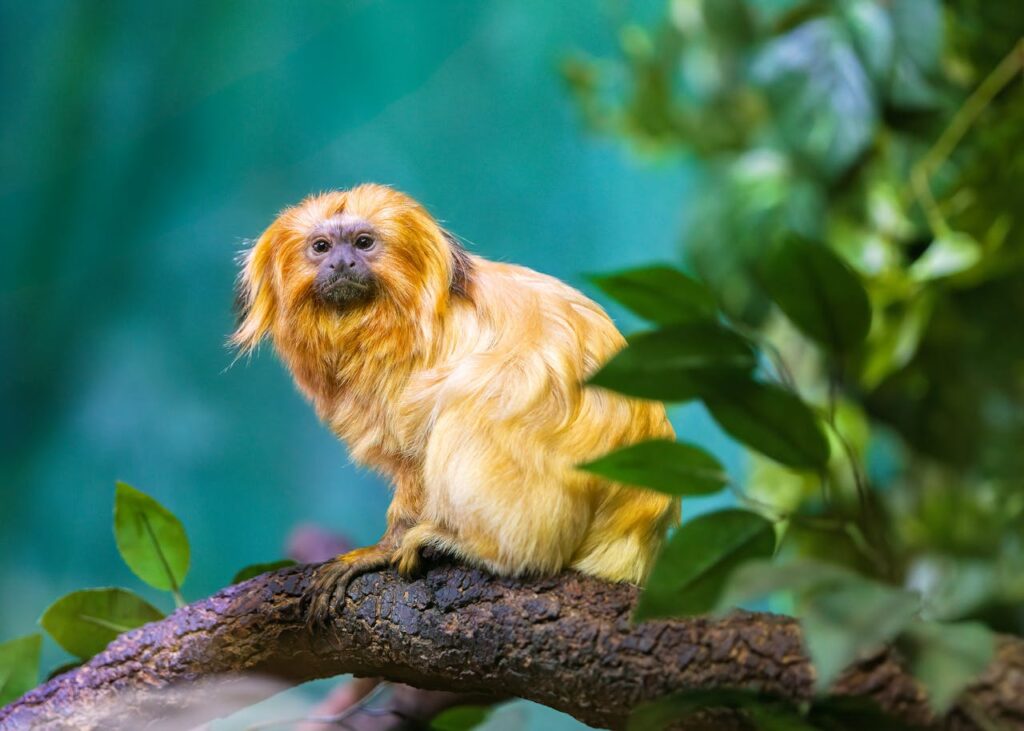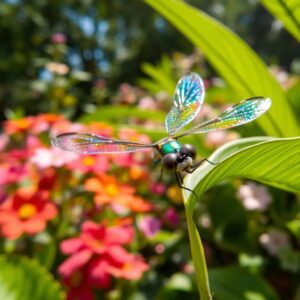
Explore & Play
Discover interesting topics and solve the accompanying crossword puzzle.
Primate Crossword | Fascinating World of Primates and Their Behaviors
Table of Contents
You can start by playing the primate crossword to test your knowledge, or if you’re not familiar with the topic, feel free to read the article first and then come back to the crossword for a fun challenge. Either way, you’ll gain valuable insights into the fascinating world of primates!
Primate Crossword
You can either fill in the crossword puzzle directly on this page or click the button in the bottom right corner to print it for free.

The Diversity of Primates: Exploring Species Across Continents
Primate species are incredibly diverse, ranging from the large and powerful gorilla to the tiny pygmy marmoset, with each species adapted to thrive in its specific environment. Across the globe, these remarkable creatures inhabit forests, savannas, and even some urban areas. In this article, we’ll dive into the rich variety of primates found on different continents, highlighting their unique characteristics, behaviors, and the challenges they face. We’ll also explore how humans have influenced their survival, from conservation efforts to the environmental changes that threaten them.
In this journey through the primate kingdom, we will also touch on a fun primate crossword puzzle that includes many of these fascinating species—let’s see how well you know your primates!
1. What Are Primates?
Primates are a diverse order of mammals that include some of the most intelligent and social animals on Earth. These creatures are characterized by several physical traits, including forward-facing eyes, grasping hands and feet, and large brains relative to their body size. These features allow them to navigate complex social structures, use tools, and adapt to a wide range of habitats.
Key Characteristics of Primates
Primates are classified into two major subgroups: strepsirrhines (including lemurs and lorises) and haplorhines (including monkeys and apes). Most primates have a keen sense of sight, with many species, like humans, relying on color vision to distinguish food from foliage. Their hands and feet are designed for grasping, making them excellent climbers and foragers. Some primates, such as the orangutan, have adapted to an arboreal lifestyle, spending much of their lives in the trees, while others, like the mandrill, thrive in terrestrial environments.
In addition to these physical traits, primates also exhibit sophisticated social behaviors. They live in groups and use various communication methods, from vocalizations to facial expressions, to interact with one another. This intelligence is why primates are often studied in relation to human behavior.
2. Primates of the African Continent
Africa is home to a wide variety of primates, including some of the most well-known species like the chimpanzee and gorilla. These primates are not only fascinating due to their biological characteristics but also for their complex social structures and interactions.
Chimpanzee
The chimpanzee is perhaps the most famous primate, largely due to its similarity to humans. Found in the rainforests and woodlands of Central and West Africa, chimpanzees are highly social animals that live in large communities. Their social structures are fluid, with individuals forming relationships based on kinship and alliances. Chimpanzees are also known for their intelligence and ability to use tools—some even use sticks to extract termites from mounds, demonstrating a remarkable capacity for problem-solving.
Chimpanzees are often studied for insights into human behavior and cognition, as they share about 98% of their DNA with humans. However, they face threats from habitat loss and poaching, with many populations now endangered.
Gorilla
The gorilla, the largest of all primates, is an iconic species native to the forests of central and West Africa. Gorillas are primarily herbivores, feeding on leaves, stems, and fruit, and they live in tight-knit family groups led by a dominant male known as the silverback. These groups are highly social, with strong bonds formed between members.
Despite their intimidating size, gorillas are gentle and peaceful creatures. However, their populations have been decimated by hunting, habitat destruction, and disease, particularly the Ebola virus. Conservation efforts, such as those in Rwanda’s Volcanoes National Park, have made progress, but gorillas remain critically endangered.
Mandrill
The mandrill is another fascinating primate of Africa. Known for its colorful face, which is used for social signaling, the mandrill is found in the rainforests of Central Africa. Their vibrant colors are more than just a beautiful display—they help mandrills communicate their social status and readiness to mate. Like chimpanzees, mandrills live in large groups and exhibit complex social behaviors. However, due to deforestation and hunting, mandrills are now considered vulnerable.
3. Primates of the Asian Continent
Asia is another region with a rich diversity of primate species, including the iconic orangutan and the smaller macaque. These species exhibit a variety of adaptations to their environments, from forest-dwelling primates to those that have adapted to urban areas.
Orangutan
The orangutan is one of the most intelligent primates and is native to the rainforests of Borneo and Sumatra. These solitary creatures are arboreal, spending most of their lives in the trees. They are known for their reddish-brown fur, long arms, and high cognitive abilities. Orangutans have been observed using tools to extract food and have complex communication methods, including facial expressions and vocalizations.
Sadly, orangutans are critically endangered due to habitat destruction, primarily from logging and palm oil plantations. Conservation organizations are working to protect their habitat, but the species is still at risk of extinction.
Macaque
The macaque is one of the most widespread primates in Asia, found in a variety of habitats from the mountains of Japan to the urban areas of India. These monkeys are incredibly adaptable, able to live in both wild forests and human settlements. They are known for their complex social structures and can be found in large troops, where they maintain social hierarchies.
Macaques are often seen as pests in urban areas, as they raid crops and scavange food from humans. However, they are also a symbol of resilience in the face of human expansion.
Tarsier
The tarsier is one of the smallest primates in the world, native to Southeast Asia, particularly the Philippines, Borneo, and Sumatra. With its large eyes and small body, the tarsier is an exceptional nocturnal hunter. Unlike many other primates, tarsiers primarily feed on insects, and their large eyes give them remarkable night vision.
Tarsiers are not commonly seen in the wild due to their elusive nature, but they are highly threatened by deforestation. Conservationists are working to protect their natural habitat to ensure their survival.
4. Primates of Madagascar
Madagascar is a haven for unique primates, with many species found nowhere else in the world. The island’s isolation has led to the evolution of a variety of endemic species, such as the lemur, aye-aye, and indri, each of which plays a vital role in its ecosystem.
Lemur
The lemur is perhaps the most famous of Madagascar’s primates. There are many species of lemurs, including the aye-aye, which is often considered one of the most unusual primates due to its long, thin middle finger used to extract insects from tree bark. Lemurs live in a variety of environments, from rainforests to dry forests, and are typically social, living in groups that work together to forage for food.
Lemurs face severe threats from habitat destruction and the illegal pet trade, and many species are now critically endangered.
Aye-aye
The aye-aye is a particularly strange and fascinating lemur known for its long fingers. It uses these fingers to tap on tree trunks in search of insects, a behavior known as “percussive foraging.” The aye-aye has a bad reputation in Malagasy folklore, where it is often considered an omen of death.
Due to habitat loss and hunting, the aye-aye is endangered, but conservation efforts in Madagascar are helping to protect this remarkable species.
5. The Diversity of New World Monkeys
In the dense rainforests of Central and South America, New World monkeys like the howler monkey and spider monkey can be found. These monkeys are often arboreal, spending most of their time in the trees, where they have evolved to be incredibly agile.
Howler Monkey
The howler monkey is known for its loud vocalizations, which can be heard over long distances. These monkeys have specialized throat structures that amplify their calls, making them the loudest land mammals. Howler monkeys live in small groups and are primarily herbivores, feeding on leaves, fruit, and flowers.
These monkeys are not only remarkable for their vocal abilities but also for their long, prehensile tails, which allow them to navigate the treetops with ease.
Spider Monkey
The spider monkey is another highly agile New World monkey, named for its long, spindly limbs that resemble a spider’s legs. These monkeys are primarily fruit-eaters and are known for their acrobatic abilities in the trees. Their prehensile tail is an essential tool for gripping branches and swinging from tree to tree.
Spider monkeys are social animals, living in large groups, and are known for their loud calls that help coordinate group movements through the forest.
6. The Rich Diversity of Primates in South America
South America is home to some of the most fascinating primates, particularly the capuchin monkey and tamarin species. These primates are renowned for their agility and ability to thrive in the dense rainforests of the Amazon Basin.
Capuchin Monkey
The capuchin monkey is one of the most intelligent New World monkeys, known for its ability to use tools in the wild. These small monkeys live in large social groups and use their keen senses to find food in the treetops, feeding on fruit, nuts, and insects. Capuchins are particularly notable for their use of stones to crack open nuts and their tendency to steal from other animals and even humans.
These monkeys have an incredible range of vocalizations, which they use to communicate with their group members. Capuchins are also widely recognized in the media, often portrayed as clever and resourceful. However, deforestation and the illegal pet trade have pushed their populations to decline in some regions.
Tamarin
The tamarin is another small primate species found in the forests of South America. Tamarins are known for their distinctive, tufted ears and lively personalities. These monkeys are highly social, living in tight-knit groups that work together to forage for food, which includes fruits, insects, and small vertebrates.
Tamarins play an important role in their ecosystem by dispersing seeds, helping to maintain the balance of their forest habitats. However, they are threatened by habitat loss due to logging and agricultural expansion, making conservation efforts critical for their survival.
7. Unique Primates of Southeast Asia
Southeast Asia is home to several rare and unique primate species, such as the proboscis monkey and gibbon. These species have adapted to the diverse environments of the region, including the wetlands, forests, and islands.
Proboscis Monkey
The proboscis monkey is easily recognizable due to its large, pendulous nose. Found primarily on the island of Borneo, these monkeys are arboreal, spending most of their time in the mangrove and rainforest habitats. Despite their distinctive appearance, proboscis monkeys are well-adapted to their environments, using their large noses to amplify their vocalizations, which helps them communicate over long distances in dense forests.
These monkeys are primarily leaf-eaters, and their long tails help them balance as they navigate through the treetops. Unfortunately, habitat destruction, particularly from palm oil plantations, threatens their populations, and they are currently listed as endangered.
Gibbon
The gibbon is one of the smallest apes, known for its remarkable ability to swing through trees with its long arms. Gibbons are highly territorial and vocal, using their calls to defend their territory and communicate with other gibbons. These primates are primarily frugivores, feeding mainly on fruit, but they will also consume leaves and insects.
Gibbons live in monogamous pairs and are often found in the tropical forests of Southeast Asia. Due to habitat destruction and illegal pet trade, several species of gibbons are now critically endangered, and conservation efforts are underway to protect their habitats and reduce poaching.
8. Primate Behavior and Social Structures
One of the most fascinating aspects of primates is their complex social structures. Unlike many other animals, primates often live in large, cohesive groups that offer protection, cooperation, and opportunities for learning. Their behavior can vary greatly depending on the species, with some primates forming tight-knit family units and others living in large, fluid communities.
Social Systems
Many primates, such as orangutans, prefer a solitary existence, while others, like chimpanzees, live in groups that can range from a few individuals to over 100 members. These groups are often led by dominant individuals, such as the silverback gorilla, who plays a central role in decision-making and protection. Social bonds are vital for survival, with members sharing food, grooming each other, and helping to care for the young.
Some primates, like the macaque, form complex hierarchies, where individuals fight for higher status within the group. The social dynamics of primates can often resemble human social structures, with power struggles, alliances, and cooperation playing key roles.
Communication
Primates use a variety of communication methods to interact with one another, including vocalizations, body language, and facial expressions. Some primates, like howler monkeys, are known for their loud calls, which can be heard miles away. Others, such as chimpanzees, rely on gestures, facial expressions, and vocalizations to convey emotions and intentions. The use of tools, such as sticks and stones, is also a form of communication in some primates, helping them to solve problems and interact with their environment.
9. The Conservation Challenges Facing Primates
Despite their adaptability and intelligence, many primates are facing increasing threats due to human activity. From deforestation to poaching, primates are at risk of losing their habitats and their very survival.
Deforestation and Habitat Loss
One of the greatest challenges facing primates today is the destruction of their natural habitats. The expansion of agriculture, logging, and infrastructure development is rapidly encroaching on the rainforests, savannas, and forests where primates thrive. The loss of these habitats not only threatens the physical space where primates live but also the food sources that sustain them.
In Southeast Asia, for example, the palm oil industry has caused extensive deforestation, particularly in Borneo and Sumatra, which has had a devastating impact on species such as orangutans and proboscis monkeys.
Poaching and the Illegal Pet Trade
In addition to habitat destruction, poaching and the illegal pet trade are major threats to primate populations. Many primates are hunted for bushmeat, while others are captured and sold as exotic pets. This trade has decimated populations of several species, including lemurs and macaques, which are often captured and trafficked illegally.
Efforts to combat poaching include law enforcement, education, and working with local communities to provide alternative livelihoods. However, these challenges persist, and more work needs to be done to ensure that primates are protected from exploitation.
10. What Can We Do to Protect Primates?
Conservation efforts are crucial in ensuring the survival of primates for future generations. From supporting wildlife sanctuaries to advocating for stronger environmental policies, there are several ways we can all help protect these incredible animals.
Supporting Conservation Programs
There are numerous conservation organizations dedicated to protecting primates, such as the World Wildlife Fund (WWF) and The Dian Fossey Gorilla Fund. These organizations work to protect habitats, fight poaching, and raise awareness about the importance of conserving primates.
Raising Awareness
Raising awareness about the plight of primates is key to ensuring their survival. By educating people about the importance of preserving primates and their habitats, we can encourage more sustainable practices and push for stronger protection laws. Individuals can also reduce their environmental impact by choosing sustainable products, such as certified palm oil and timber, to help protect the habitats of primates.
Take Action: Play the Primate Crossword!
Now that you’ve learned about the fascinating world of primates, why not test your knowledge with a fun primate crossword puzzle? It’s a great way to see how much you’ve absorbed while enjoying a bit of challenge. Get started and see how well you know your primates!
Share to...
I hope you enjoy the content.
Want to receive our daily crossword puzzle or article? Subscribe!
You may also be interested in
Share to…
Want to receive our daily crossword puzzle?
-
Jigsaw Puzzles
Vigeland Park Fantasy Puzzle 250 | 300 | 500 Pieces
kr 348,00 – kr 439,00Price range: kr 348,00 through kr 439,00 Select options This product has multiple variants. The options may be chosen on the product page -
Jigsaw Puzzles
Art Nouveau Jigsaw Puzzle with Betta Fish in Lush Garden Scene 250 | 300 | 500 Pieces
kr 348,00 – kr 439,00Price range: kr 348,00 through kr 439,00 Select options This product has multiple variants. The options may be chosen on the product page -
Jigsaw Puzzles
Cat & Sunset Wooden Jigsaw Puzzle 250 | 300 | 500 Pieces
kr 348,00 – kr 439,00Price range: kr 348,00 through kr 439,00 Select options This product has multiple variants. The options may be chosen on the product page

















